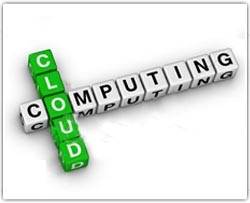A Look at Cloud Computing Efficiency
 Whenever you hear anyone talk about cloud computing, one of the biggest reasons most people bring up for moving to the cloud is that it is so much more efficient. Generally when people say this, they are thinking in terms of it costing less for staff and hardware to run a program in the cloud instead of at your own mainframe. But what about energy efficiencies?
Whenever you hear anyone talk about cloud computing, one of the biggest reasons most people bring up for moving to the cloud is that it is so much more efficient. Generally when people say this, they are thinking in terms of it costing less for staff and hardware to run a program in the cloud instead of at your own mainframe. But what about energy efficiencies?
There was an analysis done recently by WSP Environment & Energy that took a look at just this question for in-house data centers. Jonathan Koomey at GigaOm discussed this recently on his blog, and the findings should be of interest to more than just WSP’s client Salesforce.com. Looking at the per-transactions cost, they found on average a 95% reduction in transmissions. That is a huge amount of savings, so let’s take a look at where those savings originated.
One of the biggest impacts was the economy of scale, not that surprising when you truly consider it. Just as you can spread the work over a larger server base, so too can you spread the cost. When it comes to fixed costs such as equipment inventory, the improvement of the centers airflow and other costs associated with assessing Power Usage Effectiveness, spreading this cost across a wider customer base and larger number of transactions allows for a greater efficiency. You also get the advantage in size by being able to hire specialists in energy conservation who will know all the latest technology and how to implement it.
Whenever flexibility comes up as a cost saver for moving to the cloud, generally the speaker is referring to the ability to use such techniques as virtualization to separate software from the structure of physical servers. This capability may indeed cut software costs, but it also cuts energy costs due to its ability to allow you to drop features that are not energy efficient or even route the software around dead servers, eliminating the need for multiple power supplies in these circumstances. You are delivering IT services, and so the death of one server does not have to impact your reliability or the energy needed to perform.
Another area of impact is the fact that your users are spread around the globe, giving a larger operation the ability to diversify its load at any given time or day. With users who have peak needs at various days and times the end result is that those facilities are running at a much higher capacity. If you were to run efficiency tests in a typical data center you would find that most servers run at between 5 and 15% capacity making them highly underutilized. When looking at the vast majority of major players in the cloud, you will see a server utilization range of 30 to 40%.
One of the biggest discussions within many enterprises is the tug of war between IT and facilities over the cost of energy. For an IT department, the question is always how they can expand the number of servers in order to assist in more and more complex operations. Facilities departments tend to see the skyrocketing cost of electricity as a threat to their budgets. Somewhere along the line, Operations gets caught in the middle, looking for a solution to a need. In the end what happens is that they find it easier to take out the corporate credit card and simply go to the cloud to get what they need, bypassing both departments. Since IT and Facilities are under the same budget in a cloud scenario, the economy of scale once again plays into a savings of energy as it allows operations to get what it needs in a timely manner and within their budget. Problem solved, without the inter-department headaches.
As time goes on these savings in energy, when placed alongside the cost efficiencies of staffing down and the reduction in hardware needs and software upgrades will make it hard to ignore the cloud. When the capital cost of a standard in-house facility, which is now standing at $25,000 per kilowatt, becomes unthinkable the move to the cloud will be inevitable for all but the largest or most security-sensitive enterprises, such as the financial market.
There are still a few kinks in the system, one being the question of liability for cloud outages and the other being the development of truly secure public clouds. For some that solution will be an expansion into a members only private cloud structure. But even with these, there will be energy cost savings worth making the pursuit worth the time and effort. The movement to the clouds with its cost efficiencies and energy savings is just starting to really take off. Where it will eventually lead us in the next few years will be an interesting journey.
Our newsletters and blogs are written to provide you with tools and information to meet your IT and cloud solution needs. We invite you to engage in our online community by following us on Twitter @GMOCloud and ‘Liking’ us on Facebook.


